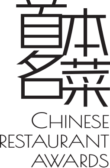By Judith Fein
If you dream of having a personal Chinese chef or can’t go more than a week without thinking about wontons, dim sum, hand-shredded chicken, bamboo shoots, or sweet and sour pork, then all you have to do is fly to Canada.
In this city of 200,000, where Vancouver International Airport is located, close to 75 percent of the population comes from China. All around you, people speak Chinese, signs are in Chinese, and you have to pinch yourself to remember that you are in Richmond — where English is widely spoken — and not Guangzhou, Shanghai, Hong Kong, or Nanjing.
Richmond diners keep an astounding 400 Asian restaurants in business.
Lee Man, a local food writer and judge for Chinese restaurant awards, opens the menu at Sea Harbour Seafood Restaurant. With casual aplomb, he orders and evaluates spot prawns (sustainably caught, fresh and succulent); black fungus with Szechuan peppercorn (spicy, with a decidedly peppery and lemony-flavor); small squab (the anise seed and soy sauce marinade seems to go on forever); hand-shredded chicken in gangalese sauce (with a hint of ginger and camphor; sea cucumber (there is a bit too much sauce at the bottom of the dish); and bok choi and bamboo pith (the latter is classified as a mushroom, and is very delicately balanced with the strong taste of bok choi). The dessert is momochacha (red beans, yellow lentils, peanuts, sticky rice, adzuki beans, millet). Cost for the banquet-like meal: $152 Canadian (today, $121 US).
Ordering a meal properly is very important to Chinese people. They will explain to you that it has to have balance, different
textures, and nothing should be overwhelming. “For Hong Kong dining,” Man explains, “there is one showpiece dish, and the others are ordered around it.” He says that you don’t linger over a meal. The tables are turned over very quickly and the waiter is there to take your order, not to guide you. A 10 percent tip is considered OK.
Man said, in a low voice, that Sea Harbour is a popular dining spot for high-end diners, but he finds it “loud, show-offy, with flavors ramped up for a Chinese palate.”
Hoitong Chinese Seafood restaurant is the opposite: a hole-in-the-wall, no-frills, Hong Kong-style eatery with fastidiously-prepared food that is beloved by Chinese foodies. They order delicacies like dried duck gizzard and golden flower soup, fried milk with egg whites and pine nuts, sweet and sour pork neck and jowls, and bitter melon omelet.
If you ask a sophisticated Chinese diner how to judge a restaurant, he or she may tell you that if you order shrimp dumpling, and it tastes fresh, has snap to it, and the delicate skin is held together well, you can be confident in what will follow.
For a snack, it’s de rigeur to sample bubble tea, which originated in Taiwan. At True’s Tea, on Alexandra Road (which is lined with Chinese restaurants), try chrysanthemum with coconut jelly and tapioca pearls. A tall glass arrives with a thick purple straw, and you can savor the sweet delight of the jelly and the chewy beads of tapioca. Or, if you opt instead for milk tea (which originated with the British in Hong Kong), try the taro coffee milk tea. True’s is a contemporary, easygoing restaurant with mah-jongg tables and Wi-Fi that is mostly frequented by 20-somethings.
Now it’s time to get down, literally, in an underground parking lot. Chinese foodaholics drive from all over to HK BBQ Master. They stand at a counter and order specialties like crispy roast pork, soy sauce poached chicken, and BBQ duck. There are a few tables and random chairs, but if they are taken, it is fine to savor the honey-glazed pork and other
foods while you are stand in the parking structure.
Suhang Restaurant is well-known for its beggar’s chicken, which must be ordered 24 hours in advance. It comes to your table looking like a huge black mound. If you try to lift it, it feels as though it weighs about 30 pounds. The chef cracks open
the blackened bread and gently pulls out chicken that is wrapped in lotus leaf. The waiter says, “Now the chicken is born.” Other delicacies at Suhang include Peking duck in a lettuce wrap, drunken chicken (the bird is cooked in wine), young pea shoots with garlic, Shanghai fried rice cake, and coconut pudding. Dinner for two is about $75.
After a good night’s sleep, head to Fisherman’s Terrace Seafood Restaurant for a complete dim sum breakfast or brunch. The choice is dizzying, but some favorites are steamed vegetable dumplings, baked BBQ pork pastry, deep-fried sweet dumplings with bitter melon, stir fried greens with assorted mushrooms, and mushroom in rice noodle wrap.
If you wonder, as you look around you in any of the restaurants, why the Chinese diners are slim, it may be because they eat sweets sparingly. Also, rice is out of fashion, and if you have room to eat it, you’ll have to make a special request.






